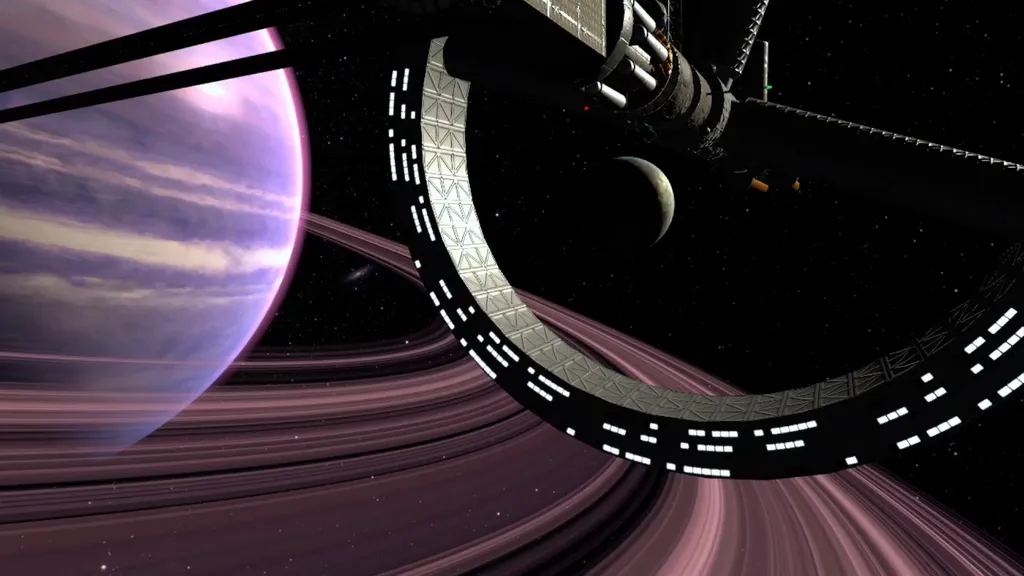When you take your first steps beyond the pull of gravity, a new world unfurls before your eyes and, in Solara One, a VR experience crafted by AC Reality Studios, this captivating journey into the cosmos comes to life.
Stepping into the universe of Solara One feels like embracing a serene escape into the unknown. Offering immersive gameplay, eye-catching graphics and an ethereal soundtrack, this is an experience that's designed for those who want to explore and relax as they traverse the infinity of space. This unique blend of tranquility and awe positions Solara One as both a visually and emotionally enriching experience that finds ways to somewhat gamify the acts of meditation and relaxation.
Gameplay
The gameplay, if you want to call it that, in Solara One focuses primarily on exploration and relaxation. The idea here is less about aggressive endeavors or a dark and ominous sci-fi story like we see in most VR space titles these days, but more about soaking in the cosmic wonders that you see all around you. Initially, if you decide to play the sequences in order, players find themselves navigating through a short segment of lush jungle on their way to grab a space taxi that then takes them to a spaceport where they can soak in some serene cloudscapes before leaving for their final destination...Solara One.
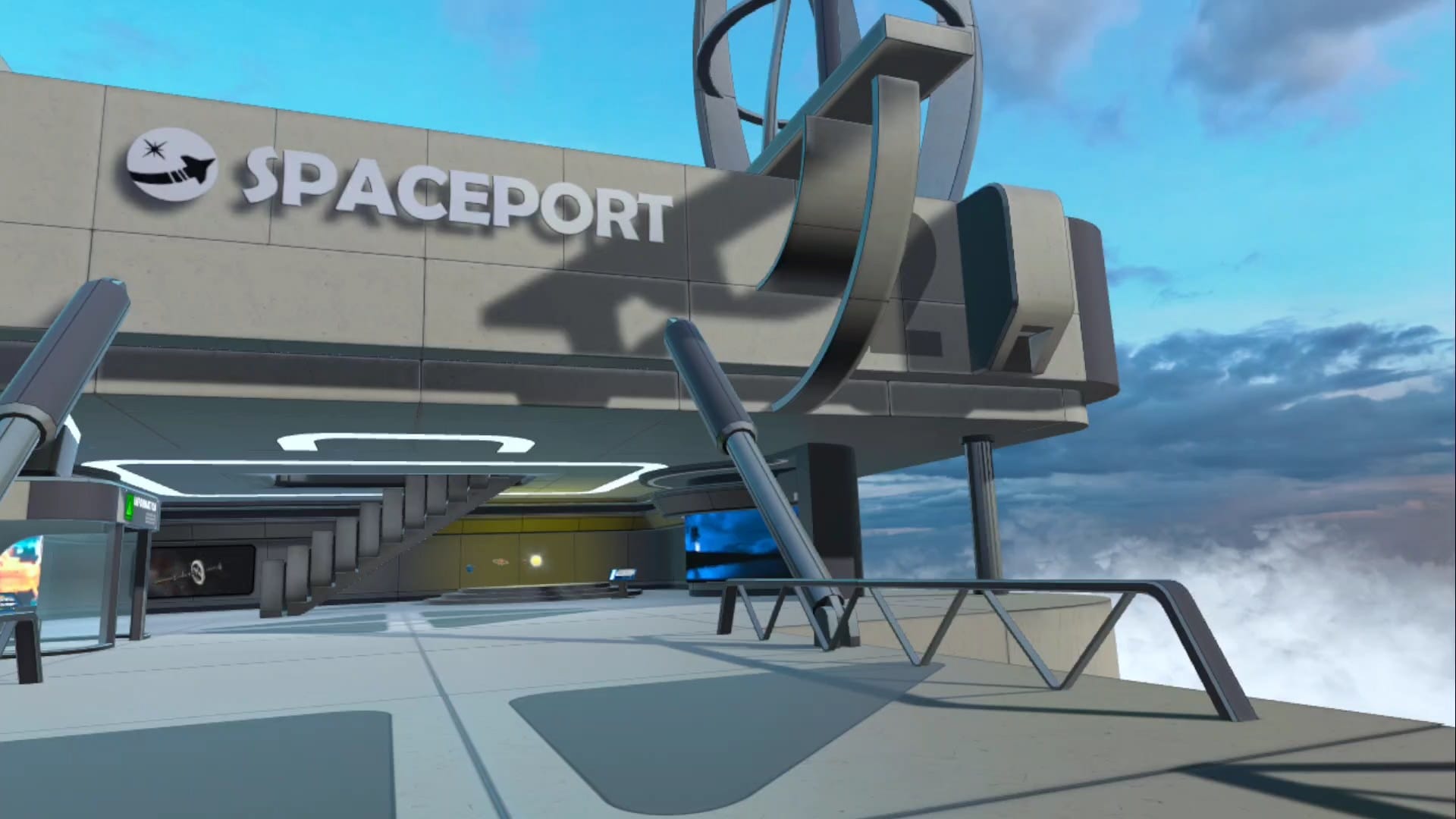
The detailed representation of these environments serve as a gentle introduction to the movement mechanics and interaction within the game and offer a nice buildup to what awaits. The spaceport environment not only serves as a tutorial for the gameplay mechanics, but is also an educational hub, as well as a place for guided meditations. On the upper levels, players can find a series of decks to relax on, each with an array of different colored crystals to choose. Each crystal provides a different style of guided meditation that can be enjoyed before stepping into the transporter that takes you into orbit.
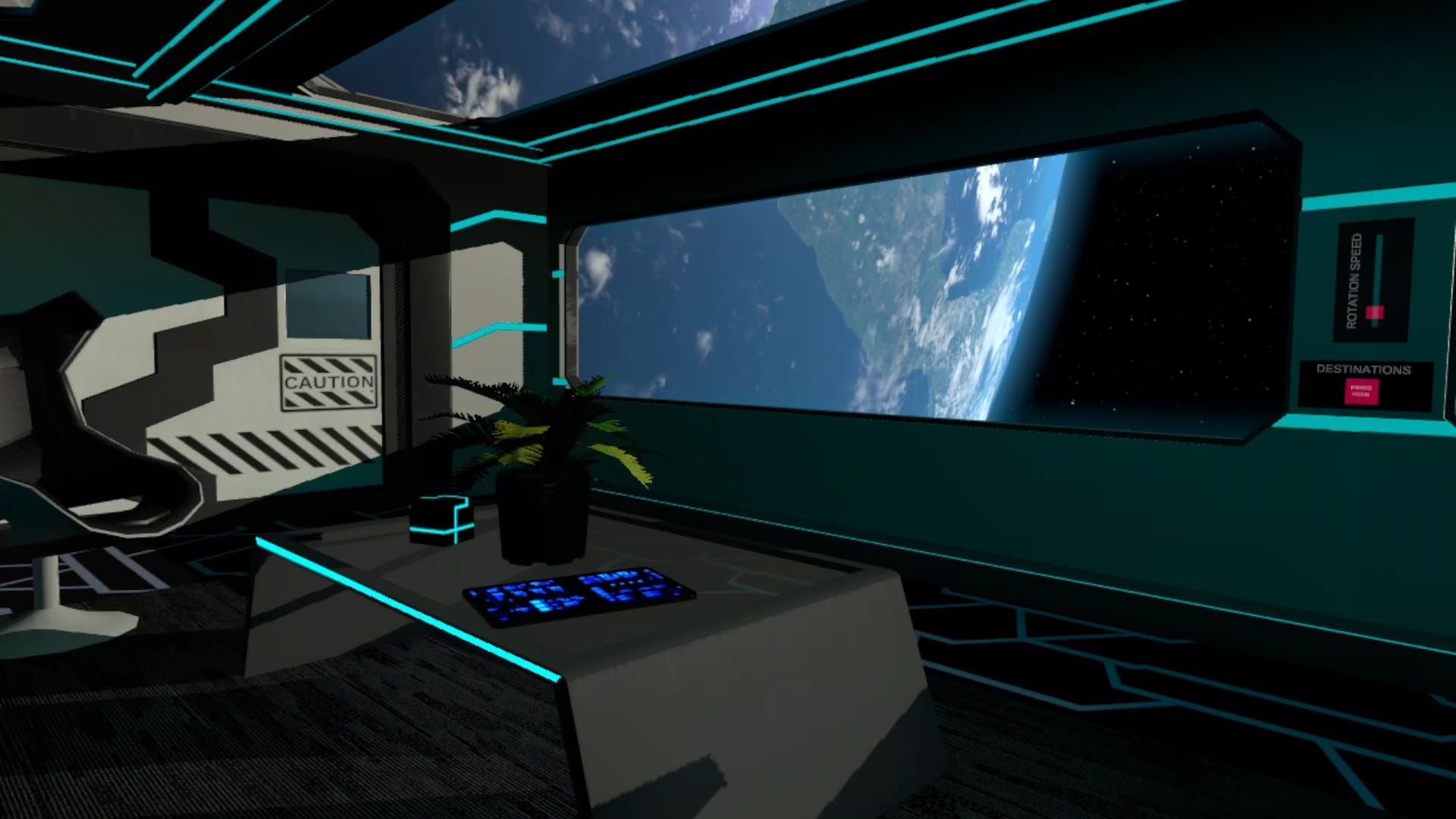
Once you finally make it to the ship, Solara One offers an environment that makes the absence of gravity a cornerstone of the experience. While you don't find yourself personally floating around inside the ship's lounge environment, the objects around you that are interactable can, and do, tend to float away at times. The ship also has a spinning motion which could make some players feel uncomfortable, so it was nice to see the inclusion of a slider that allows for control of the rotation speed. Other than the destination panel and this rotational speed slider, there really wasn't much else to do inside the ship. Other doors were present but not able to be opened, so hopefully the developers of Solara One build more into the station so we get to see behind those doors in the future.
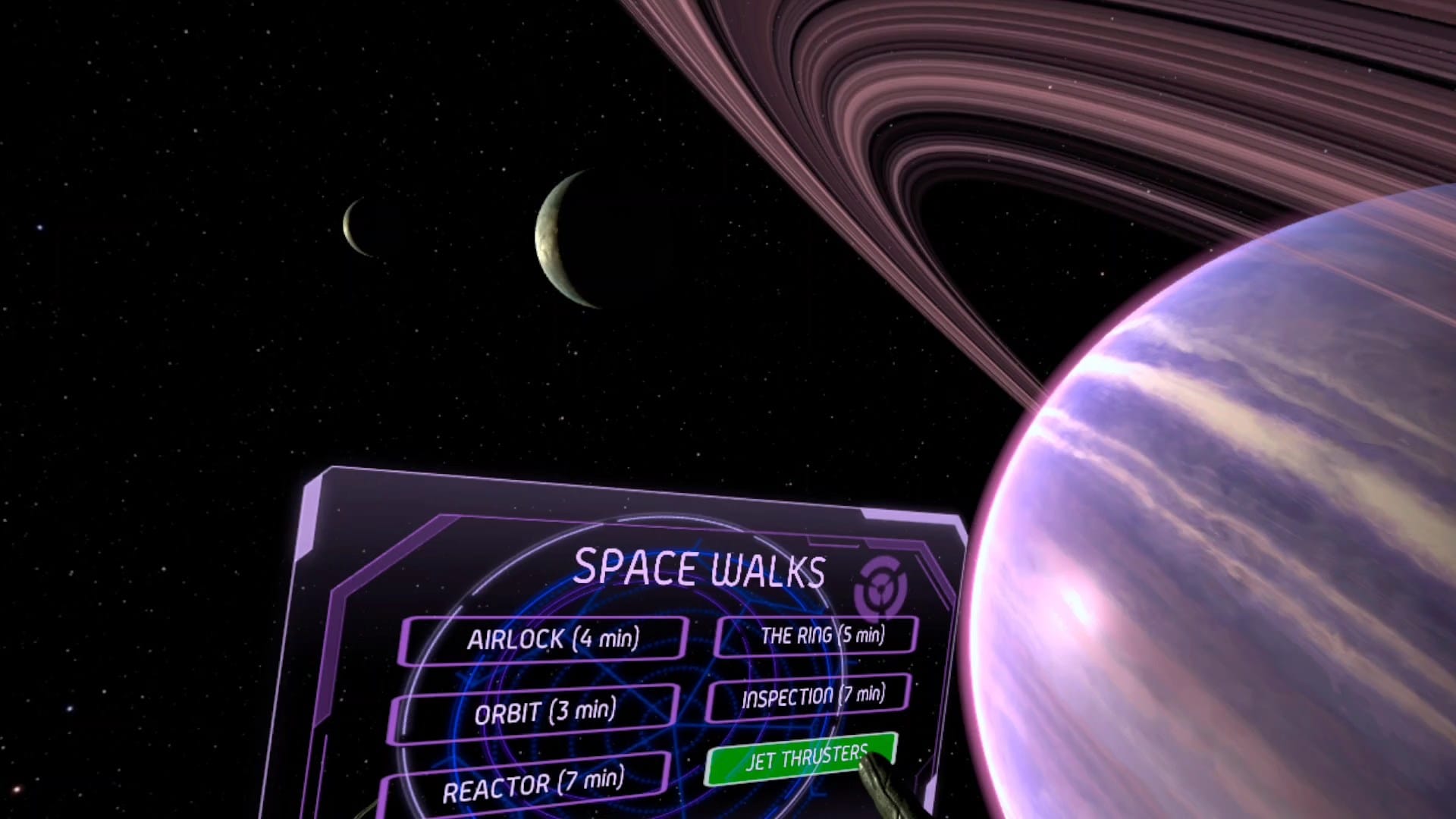
Outside of the confines of the ship, players can engage in a series of either guided or unassisted zero-gravity spacewalks after traversing wormholes that lead to additional celestial bodies. The engagement level in these activities for the most part is passive, with the game offering a total of 5 guided tours and one that was recently added in the last update now allows players the use of thrusters that are attached to their in-game hands. This was a welcomed addition as it gives players the freedom to explore at their own pace allowing them to truly soak in the beauty and wonder of the very detailed vistas the game presents... each one compelling yet soothing, resonating with the core theme of relaxation in this experience.
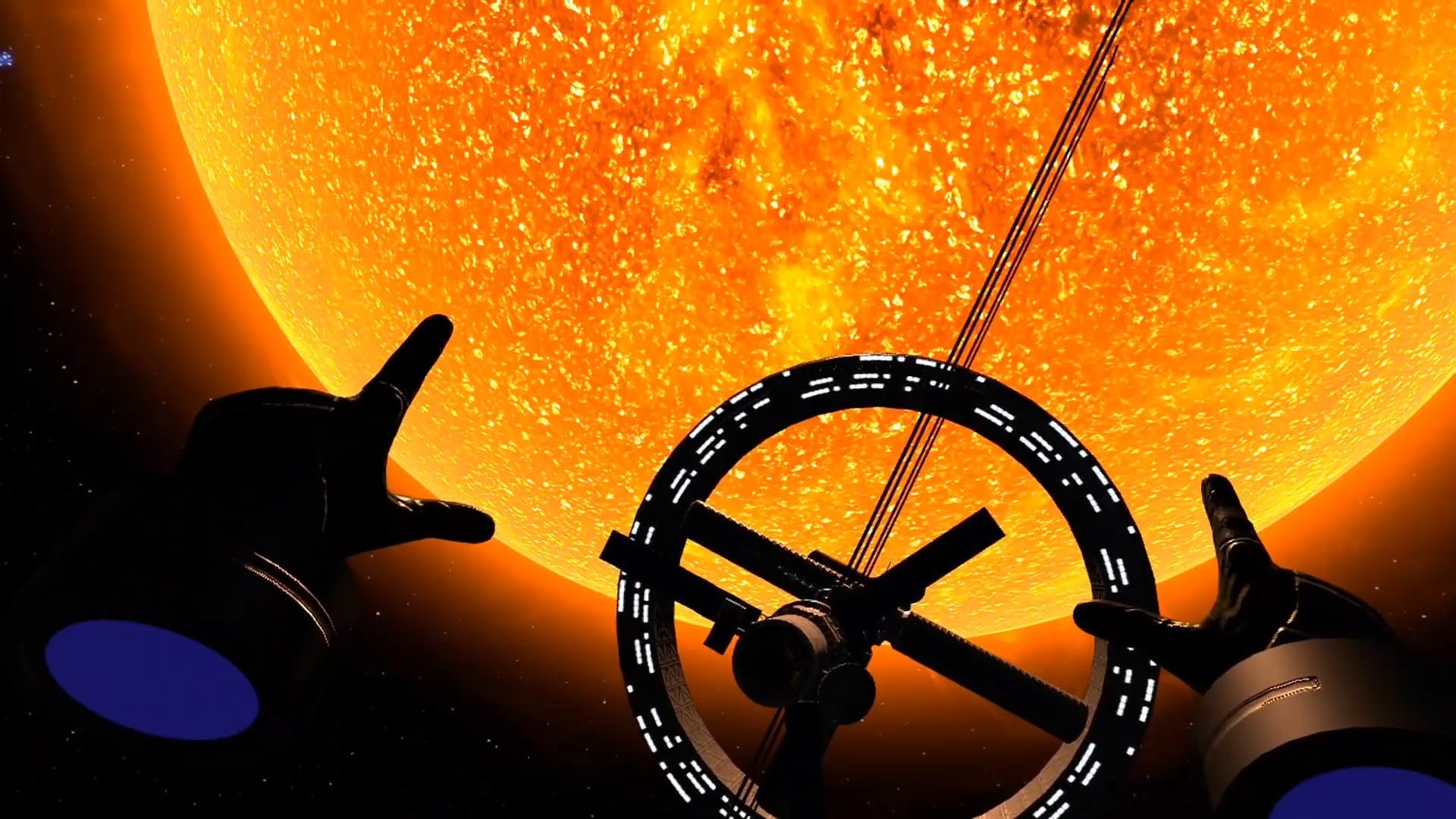
Graphics Quality and Sound Design
Solara One sets the bar high on Quest 3 with meticulous attention to detail, but it still lacks in some of the polish we've seen in other ambitious standalone titles like Red Matter or Asgard's Wrath 2. While on Earth, every leaf in the jungle, every droplet of water, and every cloud in the sky is rendered remarkable detail, and it is clear that the landscapes try to exude a sense of realism even though the limits in graphical fidelity possible on Quest 3 do start to occasionally show through.
When players venture into space, this is where the graphics become more impressive. The celestial bodies, star fields, and wormholes are all depicted with mesmerizing beauty, making the immensity of the universe feel tangibly close. Astronauts sometimes describe what is referred to as the "overview effect" as having an immense feeling of smallness while floating above the planet, and I can say that I felt similar sensations during a few of my virtual space walks.
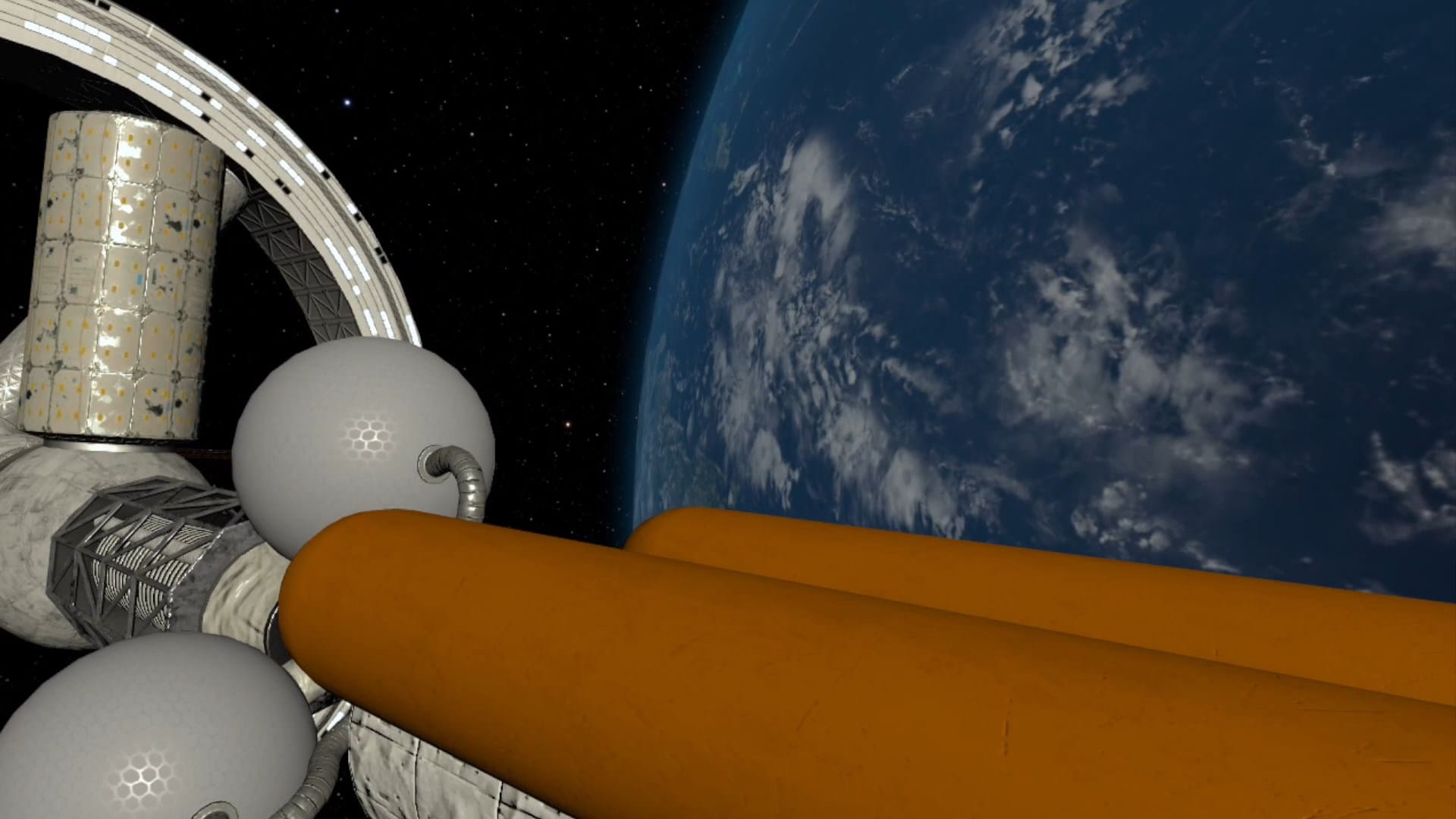
The sound design in Solara One is in perfect harmony with the experience and complements the visuals nicely. On Earth, ambient sounds of nature provide a serene backdrop, enhancing the feeling of tranquility. As players explore outer space, the soundscape transforms to include subdued tones that seem to complement the silence of being in a vacuum, interspersed with the gentle hum of the space station and the crackling of the new jetpack thrusters. The seamless integration of these subtle audio elements blending with the deafening silence of space, as well as the relaxed style of gameplay, amplifies the immersion. For me, it all seemed to aid in creating a meditative effect.
Controls and Comfort
The control scheme in Solara One is pretty straightforward. The primary mode of navigation consists of a choice between traditional smooth locomotion or teleportation on the left stick mixed with snap turning on the right. There was no option for smooth turning present in the menu currently, so hopefully AC Reality Studios will consider adding this option in a future update. The recent manual jetpack control feature that was added in their latest update is a game-changer. This addition brings intuitive and responsive movements while navigating in the weightlessness of the many space walks you will be doing.
Similar VR Experiences
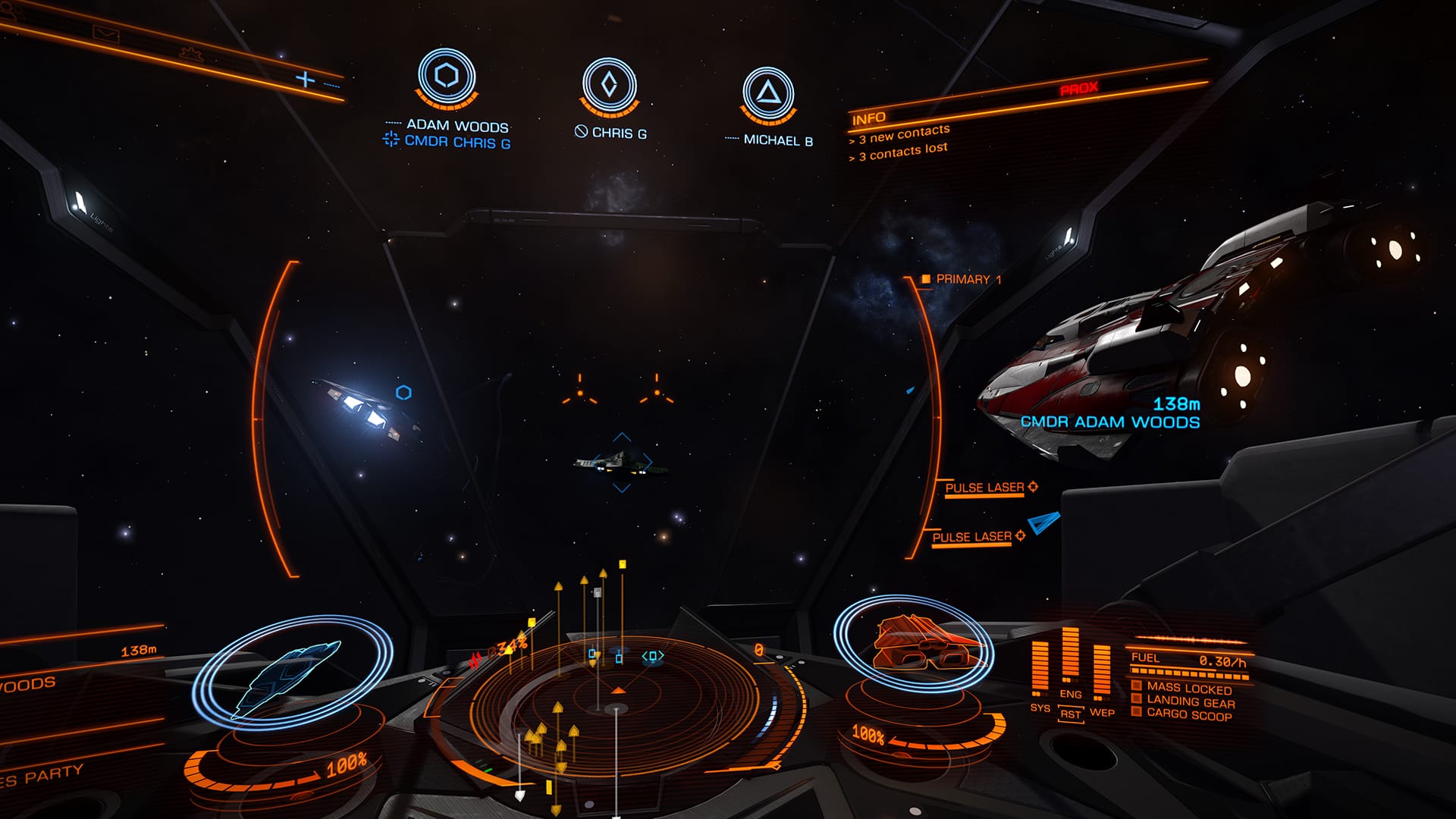
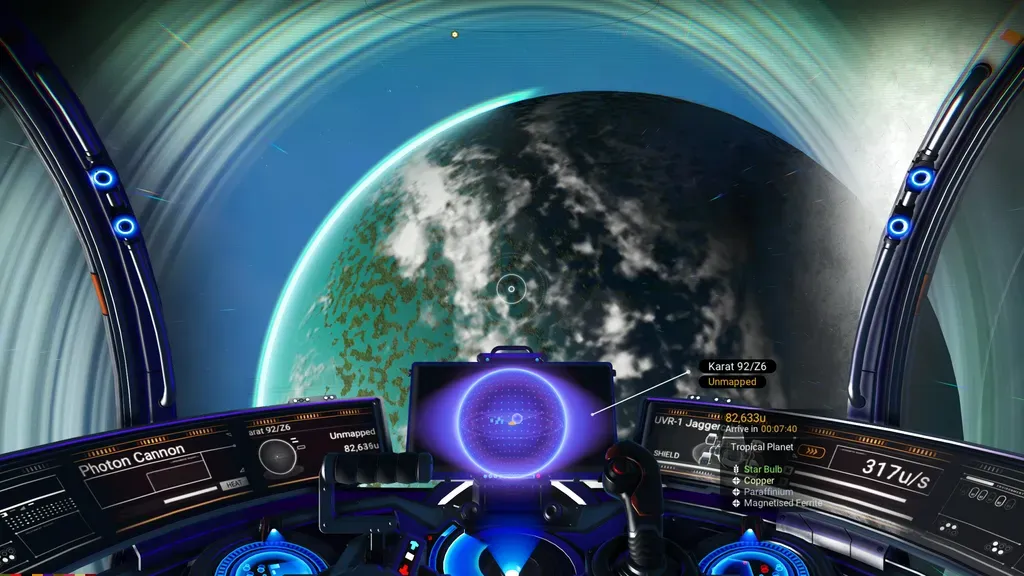
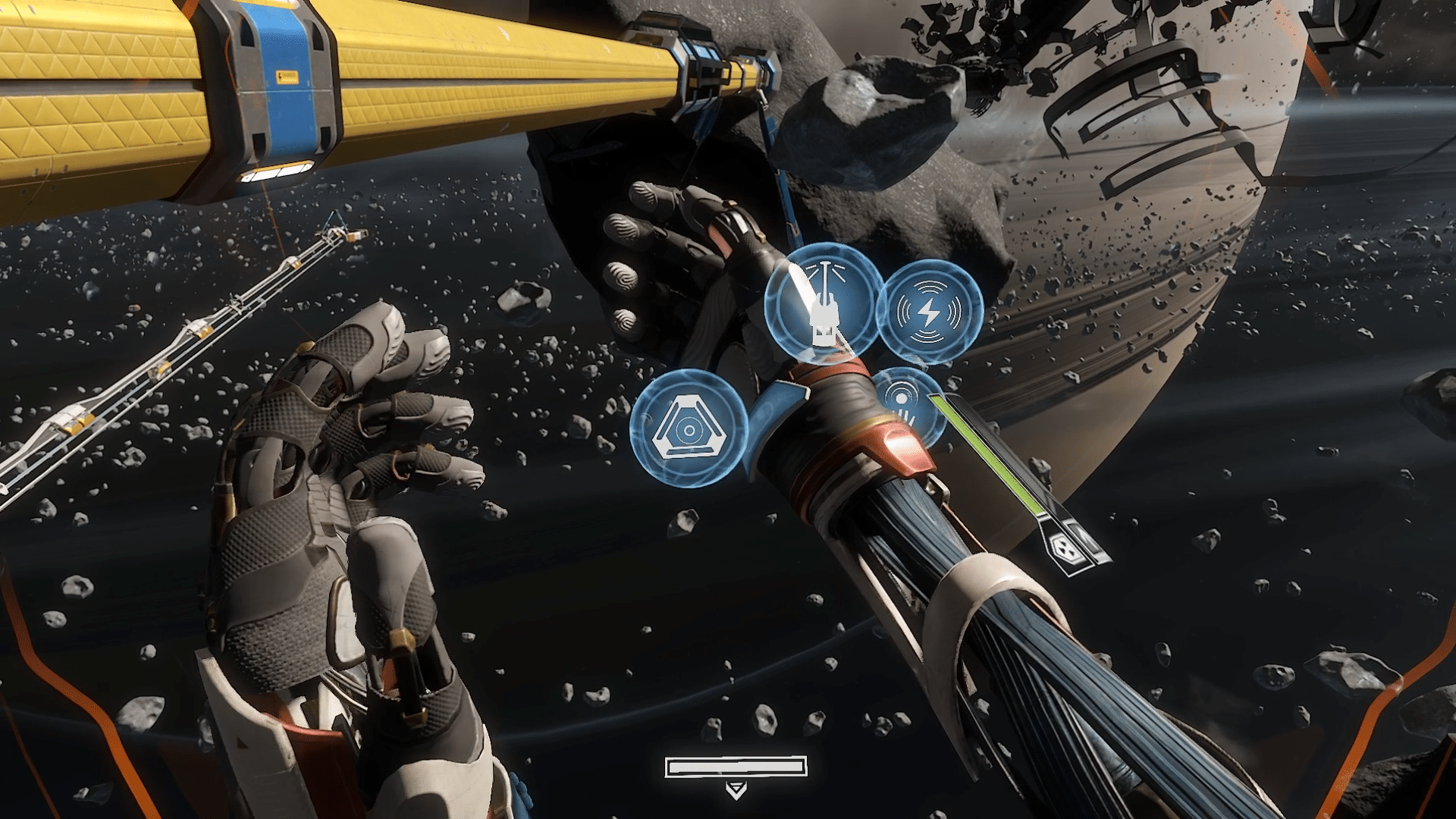
Elite Dangerous - No Man's Sky - Lone Echo
Solara One is not the first VR game to offer space exploration, but it distinguishes itself through its emphasis on relaxation and the quality of its visual and auditory experience. Titles like Elite Dangerous and No Man's Sky also offer vast space environments to explore, but they often combine that exploration with elements of survival or narrative-driven quests.
When compared to a game like Lone Echo, which offers a deeply narrative-driven experience with intricate interactions and a storyline, it's clear that Solara One's focus is entirely on the aesthetic and contemplative aspects of space, and it prioritizes a free-form exploration model building on an atmosphere of serenity and wonder.
Conclusion
Overall, Solara One offers a breathtaking journey through both familiar and unknown realms of our Universe. With its primary focus on relaxation, this experience provides a unique VR journey to the stars that sets itself apart from other titles in the genre while delivering a visually captivating and emotionally soothing experience. While it may not appeal to everyone, especially those who want the intense gameplay found in some other space-based VR titles, Solara One is sure to please for those who are looking to experience some beautifully crafted virtual reality environments that give an unparalleled sense of immersion.
If you’re in search of a VR experience that offers both tranquility and awe, then embarking on a journey through Solara One might just be the escape you need. And remember, in a game where you can explore the endless possibilities of the cosmos, the only limit is your own sense of wonder—so let your imagination soar, and who knows to what distant galaxies it might take you.
Solara One is available now for $9.99 and you can grab a copy from the link below.


